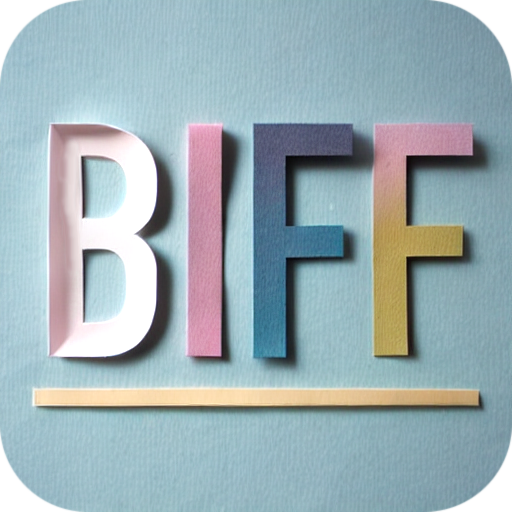AI is transforming virtual production, making it faster, cheaper, and more creative. By enabling real-time adjustments, automating tasks, and creating 3D assets instantly, AI tools like NVIDIA Edify and Unreal Engine simplify workflows and reduce costs. Here’s what AI brings to virtual production:
- Scene Composition: Real-time updates to lighting, camera angles, and effects.
- 3D Asset Creation: Generative AI builds detailed models and environments in minutes.
- Real-Time Rendering: AI-powered rendering enhances visual quality during shoots.
- Cost Savings: Cuts down on-location shoots and post-production expenses.
- Expanded Creativity: Automates technical tasks, letting teams focus on storytelling.
These tools are already being used in projects like Disney’s The Lion King, showcasing AI’s potential to blend live-action and CGI seamlessly. While challenges like workflow integration and skill gaps remain, the future of AI in virtual production is set to reshape filmmaking.
Key AI Technologies for Real-Time Scene Tools
3D Asset Creation with Generative AI
Generative AI has transformed the way 3D assets are created, making it possible to produce detailed environments and objects for virtual scenes with minimal manual effort. Instead of painstakingly modeling each element, teams can now rely on AI to handle the heavy lifting. For example, NVIDIA’s Edify platform demonstrated its potential at SIGGRAPH’s Real-Time Live event, where researchers generated a highly detailed 3D desert landscape in just minutes [2].
With these tools, production teams can:
- Quickly create intricate environments and multiple asset variations
- Adjust and refine designs in real time
- Ensure consistent visual quality across projects
This technology directly supports real-time rendering and scene composition, streamlining workflows and saving time.
AI-Powered Real-Time Rendering
AI has elevated real-time rendering by integrating advanced machine learning into game engines. Unreal Engine, for instance, uses these algorithms to enhance visual quality without sacrificing performance. This allows systems to handle complex lighting, textures, and effects instantly, enabling directors to view near-final-quality visuals during filming [3].
AI Tools for Scene Composition
AI-driven tools are also reshaping how scenes are composed. For example, Arraiy employs machine learning to replace backgrounds in real time, removing the need for traditional green screens [4].
Platforms like NVIDIA Omniverse bring these tools together, creating a robust ecosystem for virtual production. Directors can make instant adjustments to key elements, such as:
- Lighting and shadows
- Camera angles and movements
- Environmental effects like weather or fog
- Character placement and interactions
This shift has brought post-production tasks into the filming process itself, allowing changes to be made on the spot [1][4].
Advantages of AI in Virtual Production
Cutting Production Costs
AI-powered virtual environments can dramatically lower production expenses by eliminating the need for costly on-location shoots [1]. By streamlining workflows and optimizing resources like computing power and staff time, AI allows smaller studios to deliver high-quality results that rival larger productions [1].
Expanding Creative Possibilities
By automating technical tasks, AI lets creative teams focus on storytelling and artistic decisions [1][4]. With tools that enable rapid prototyping and instant feedback, teams can:
- Experiment with multiple ideas and take creative risks without significant consequences.
- Tackle intricate visual narratives that might have been too complex before.
- Simplify creative workflows through automation, saving time and effort.
Real-Time Adjustments During Shoots
One of AI’s standout features is its ability to make precise, real-time adjustments during filming [1][4]. With AI-driven scene composition tools, teams can:
- Integrate and tweak virtual and physical elements effortlessly.
- Instantly modify lighting, environmental settings, and effects.
- Achieve seamless visual blending on the spot.
This eliminates the heavy reliance on post-production fixes, giving teams the chance to fine-tune their vision directly on set. Real-time adjustments not only improve creative control but also help avoid expensive reshoots [1].
These benefits are already being utilized in cutting-edge projects, showcasing the potential of AI in transforming virtual production.
AI Compositing with NVIDIA BROADCAST inside Unreal Engine

sbb-itb-5392f3d
Examples and Case Studies of AI in Virtual Production
Real-world examples and case studies show how AI tools are changing the game in virtual production – making workflows faster and opening up new creative possibilities.
NVIDIA Edify in Environment Creation

NVIDIA’s Edify platform demonstrates how AI can revolutionize virtual production, particularly in creating environments. It features two core tools:
- Edify 3D: Generates editable 3D models, like rock formations, from text descriptions or reference images.
- Edify 360 HDRi: Produces HDR images for realistic lighting and backgrounds.
For example, Edify was able to create a detailed desert landscape in just minutes [2]. Its ability to combine real-time adjustments with text-to-3D workflows makes it a standout tool in virtual production. This isn’t just about creating assets – it’s about transforming entire workflows.
AI in Virtual Production Projects
AI tools like NVIDIA Edify are making a noticeable impact on real-world virtual production projects.
"The use of AI in virtual production enables directors to visualize and manipulate scenes on the fly, making creative decisions and adjustments as they shoot, rather than waiting for lengthy post-production processes" [5].
A great example is Disney’s The Lion King, which used Unreal Engine to help with creative decision-making during production [3]. Other tools, such as Arraiy, ShotPro, and Adobe Sensei, assist with tasks like pre-visualization, composition, and post-production by utilizing real-time analysis and automation [4].
These advancements are leveling the playing field, making high-quality virtual production available to studios with smaller budgets [1].
Future of AI in Virtual Production
Upcoming Trends in AI for Virtual Production
Virtual production is evolving quickly, with AI stepping up to change the game. Real-time collaboration tools powered by AI are making it easier for production teams to make instant adjustments during shoots, cutting down the need for heavy post-production work [1].
Generative AI is also making waves. It’s speeding up content creation and helping teams rethink how they design environments, create assets, and compose scenes in real time [2].
AI-driven automation is advancing in virtual production workflows, taking on more complex tasks:
| Area | Current Capability | What’s Next |
|---|---|---|
| Environment Creation | Basic 3D asset generation | Dynamic, photorealistic environments |
| Real-time Rendering | Standard real-time adjustments | AI-powered physics-based rendering |
| VFX Integration | Partially automated processes | Fully automated, real-time integration |
While these advancements are reshaping the production process, they come with their own set of challenges that need attention.
Challenges and Limitations of AI
With AI revolutionizing virtual production, several challenges are coming to light. One major hurdle is the complexity of integrating AI tools into existing workflows without disrupting the process [1].
Technical issues also arise, like ensuring consistent quality, maintaining real-time performance, and finding a balance between automation and creative control. Ethical concerns are growing too, especially around data privacy and potential bias in AI-generated content [1].
The shift to AI-driven tools is also changing the skill sets required in the industry. Production teams now need to learn how to use these advanced tools while still preserving their creative edge [3].
AI’s collaboration with game engines like Unreal Engine is pushing real-time rendering and scene composition to new levels [5]. Despite the challenges, the potential for AI to enhance both creativity and efficiency in virtual production is hard to ignore.
Conclusion
Key Takeaways on AI in Virtual Production
AI is reshaping virtual production workflows by introducing real-time tools that streamline scene composition, asset creation, and rendering. These advancements allow for real-time changes, automate repetitive tasks, and reduce costs, making high-quality production more efficient and accessible.
Here’s how AI is making an impact:
| Production Aspect | AI’s Role |
|---|---|
| Scene Composition | Enables real-time adjustments and automation |
| Workflow Efficiency | Automates pre-visualization and planning |
| Cost Management | Reduces reliance on physical sets |
Tools like NVIDIA Edify simplify complex workflows, while platforms such as Unreal Engine enhance real-time rendering capabilities [2]. These developments free up filmmakers to focus on creativity, removing many of the technical barriers traditionally associated with virtual production [1].
Explore More with BIFF.ai
For deeper insights into how AI is shaping virtual production and other industries, check out BIFF.ai. They cover the latest tools and trends in generative AI, including applications in gaming, 3D design, and video synthesis.
While challenges like integrating AI into workflows and maintaining creative control remain, tools such as Cuebric, Runway, and Kaiber are pushing the boundaries of what’s possible [5]. As the technology advances, AI will continue to transform filmmaking, opening up new creative and technical opportunities for creators everywhere.
FAQs
How are AI-generated 3D models transforming 3D pipelines?
AI-generated 3D models are changing how virtual production works by speeding up the creation of realistic scenes. Tools like NVIDIA Edify simplify the process by automating 3D asset creation, cutting down on manual effort and streamlining workflows [2].
Here’s how AI is reshaping key areas of 3D production:
| Area | AI’s Role |
|---|---|
| Asset Creation | Automatically generates 3D models |
| Texture Generation | Produces lifelike materials and surfaces |
| Scene Composition | Enables real-time lighting and VFX adjustments |
| Workflow Efficiency | Speeds up production with less manual input |
Platforms like Arraiy and ShotPro process footage instantly, making it easier to tweak lighting and effects on the spot. This creates more natural-looking virtual sets [1].
"AI tools allow for real-time adjustments to lighting, textures, and VFX, improving the natural feel of virtual sets and reducing the need for costly physical sets and location shoots" [1].
AI tools such as Cuebric (for real-time scene adjustments), Runway (AI-powered editing), and Kaiber (dynamic visuals) are pushing creative possibilities further [5]. By integrating these tools into real-time scene composition, filmmakers gain more flexibility and efficiency during production.
The growing presence of AI in 3D modeling and virtual production reflects its expanding influence across the industry, as discussed throughout this guide.

